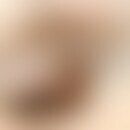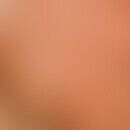Synonym(s)
DefinitionThis section has been translated automatically.
EtiopathogenesisThis section has been translated automatically.
The triggering pruritogen has not yet been clearly identified. There are a number of indications that doubt a direct connection between bile salts and pruritus. A correlation between pruritus intensity and bile salt concentrations could not be proven. Nor between pruritus and the extent of cholestasis. The atiopathogenetic role of endogenous opioids, histamine, autotaxin and lysophosphatidic acid is discussed.
You might also be interested in
TherapyThis section has been translated automatically.
External therapyThis section has been translated automatically.
Menthol, Polidocanol: The external therapy approaches are generally not very successful. Cooling ointments containing water, shaking mixtures or even gels with added menthol (e.g. Menthol-Creme 5%) and Polidocanol (e.g. Thesit, Optiderm, R200 R197 ) are able to slightly reduce itching.
Capsaicin: Occasionally good results can be achieved with an ointment containing capsaicin. Capsaicin is a relatively uncomplicated extract of cayenne pepper. The ointment is applied several times a day; start with a 0.025% concentration, later gradually increase to 0.075% capsaicin R036. Only low concentrations should be used in sensitive areas such as the face. Cold showering also relieves itching.
Internal therapyThis section has been translated automatically.
In primary biliary cirrhosis, good effects of codeine (4-hourly 20 mg p.o.) have been described (elevated plasma levels of endogenous opioids play a role in pruritus in primary biliary cirrhosis; codeine inhibits this mechanism).
Exchange resins: Some patients respond to therapy with the anion exchange resin colestyramine. (e.g. Quantalan: Dosage: 4 portions of 4g (max. 16g/day) spread over the day, to be taken before meals). Exchange resins are non-absorbable alkaline macromolecules that bind anions, amphiphilic substances such as bile salts in the intestinal lumen.
Opioid receptor antagonists: The efficacy of the opioid receptor antagonists naloxone and naltrexone (12.5-50mg/day p.o.) has been demonstrated in studies.
Rifampicin: Also effective is the use of the antibiotic rifampicin (300-600mg/day) - which acts as a ligand of the nuclear pregnant/steroid X receptor.
Experimental: Lidocaine, phototherapy (UVA and UVB), plasmapheresis.
LiteratureThis section has been translated automatically.
- Jones EA (1996) Why do chlestatic patients itch? British J Med 38: 644-645
- Kaliner MA (2002) H1-antihistamines in the elderly. Clin Allergy Immunol 17: 465-481
- kremer AE et al (2012) Cholestatic pruritus. News on pathophysiology and current therapy. dermatologist 63: 532-538
- Schirrmacher S et al (2003) Pathogenesis and treatment of pruritus in patients with cholestasis. Z Gastroenterol 41: 259-262
- Velayudham LS et al (2003) Drug-induced cholestasis. Expert Opinion Drug Saf 2: 287-304
- Zylicz Z, Krajnik M (1999) Codeine for pruritus in primary biliary cirrhosis. Lancet 353: 813
Incoming links (7)
Alagille syndrome; Capsaicin cream, hydrophilic 0.025/0.05 or 0.1% (nrf 11.125.); Menthol cream 5%; Polidocanol gel, hydrophilic 5% (nrf 11.117.); Polidocanol zinc oxide shaking mixture 3/5 or 10% (nrf 11.66.) [white/skin coloured].; Pruritus cum materia; Pruritus in neoplasia;Outgoing links (13)
Autotaxin; Capsaicin; Capsaicin cream, hydrophilic 0.025/0.05 or 0.1% (nrf 11.125.); Gels hydrophilic; Histamine; Menthol; Menthol cream 5%; Opioids; Polidocanol; Polidocanol gel, hydrophilic 5% (nrf 11.117.); ... Show allDisclaimer
Please ask your physician for a reliable diagnosis. This website is only meant as a reference.




